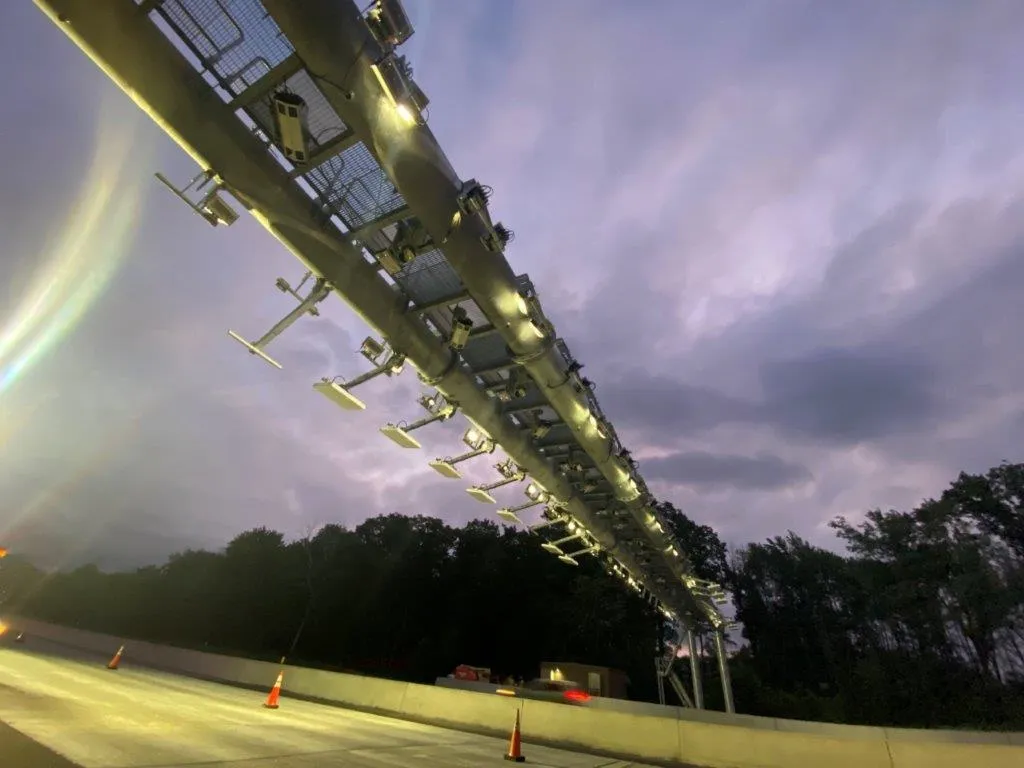New Zealand is to implement multi-lane free flow tolling on key routes in Tauranga later this year, with the installation of two high-tech electronic tolling gantries, each with 16 cameras, on Tauranga Eastern Link (TEL) and Route K.
The cameras will capture an image of the vehicle’s front and rear registration plates using the latest optical character recognition technology. The cameras will read the registration plates and determine the size of the vehicle and whether it is a motorcycle, car, truck or
March 27, 2015
Read time: 2 mins
New Zealand is to implement multi-lane free flow tolling on key routes in Tauranga later this year, with the installation of two high-tech electronic tolling gantries, each with 16 cameras, on Tauranga Eastern Link (TEL) and Route K.
The cameras will capture an image of the vehicle’s front and rear registration plates using the latest optical character recognition technology. The cameras will read the registration plates and determine the size of the vehicle and whether it is a motorcycle, car, truck or bus so the correct toll can be assigned.
One of the nine-metre high electronic tolling gantries has been installed on the Tauranga Eastern Link (TEL) ahead of the official opening of the motorway later this year. The second toll gantry will be built on Tauranga’s Route K in April, in preparation for when the6296 New Zealand Transport Agency takes ownership of the road from Tauranga City Council in July 2015.
According to the Transport Agency’s Waikato/Bay of Plenty regional director, Harry Wilson, the new toll points are the first of their kind in New Zealand.
“Motorists have been using the electronic toll system on the Northern Gateway Toll Road (NGTR), north of Auckland, since 2009; however technology has moved on since the dual-gantry on the NGTR was installed,” Wilson says.
“The gantries in Tauranga are a single gantry which spans all of the lanes and has an exterior cladding.
“All of the technical elements are housed inside the gantry cladding and in the technical shelter on the roadside. This results in a sleeker and more sophisticated design and it also means there is less potential for driver distraction when any maintenance work is carried out.”
Wilson says the main benefit of the free-flow systems being used in Auckland and Tauranga is that there is no need for toll booths, allowing drivers to travel straight through, reducing travel times and providing a more predictable journey.
The Transport Agency is also upgrading the back-end tolling system, offering customers a range of ways to pay their tolls.
The new tolling system is expected to be operational in early July, ahead of the TEL being opened and Route K being electronically tolled.
The cameras will capture an image of the vehicle’s front and rear registration plates using the latest optical character recognition technology. The cameras will read the registration plates and determine the size of the vehicle and whether it is a motorcycle, car, truck or bus so the correct toll can be assigned.
One of the nine-metre high electronic tolling gantries has been installed on the Tauranga Eastern Link (TEL) ahead of the official opening of the motorway later this year. The second toll gantry will be built on Tauranga’s Route K in April, in preparation for when the
According to the Transport Agency’s Waikato/Bay of Plenty regional director, Harry Wilson, the new toll points are the first of their kind in New Zealand.
“Motorists have been using the electronic toll system on the Northern Gateway Toll Road (NGTR), north of Auckland, since 2009; however technology has moved on since the dual-gantry on the NGTR was installed,” Wilson says.
“The gantries in Tauranga are a single gantry which spans all of the lanes and has an exterior cladding.
“All of the technical elements are housed inside the gantry cladding and in the technical shelter on the roadside. This results in a sleeker and more sophisticated design and it also means there is less potential for driver distraction when any maintenance work is carried out.”
Wilson says the main benefit of the free-flow systems being used in Auckland and Tauranga is that there is no need for toll booths, allowing drivers to travel straight through, reducing travel times and providing a more predictable journey.
The Transport Agency is also upgrading the back-end tolling system, offering customers a range of ways to pay their tolls.
The new tolling system is expected to be operational in early July, ahead of the TEL being opened and Route K being electronically tolled.








